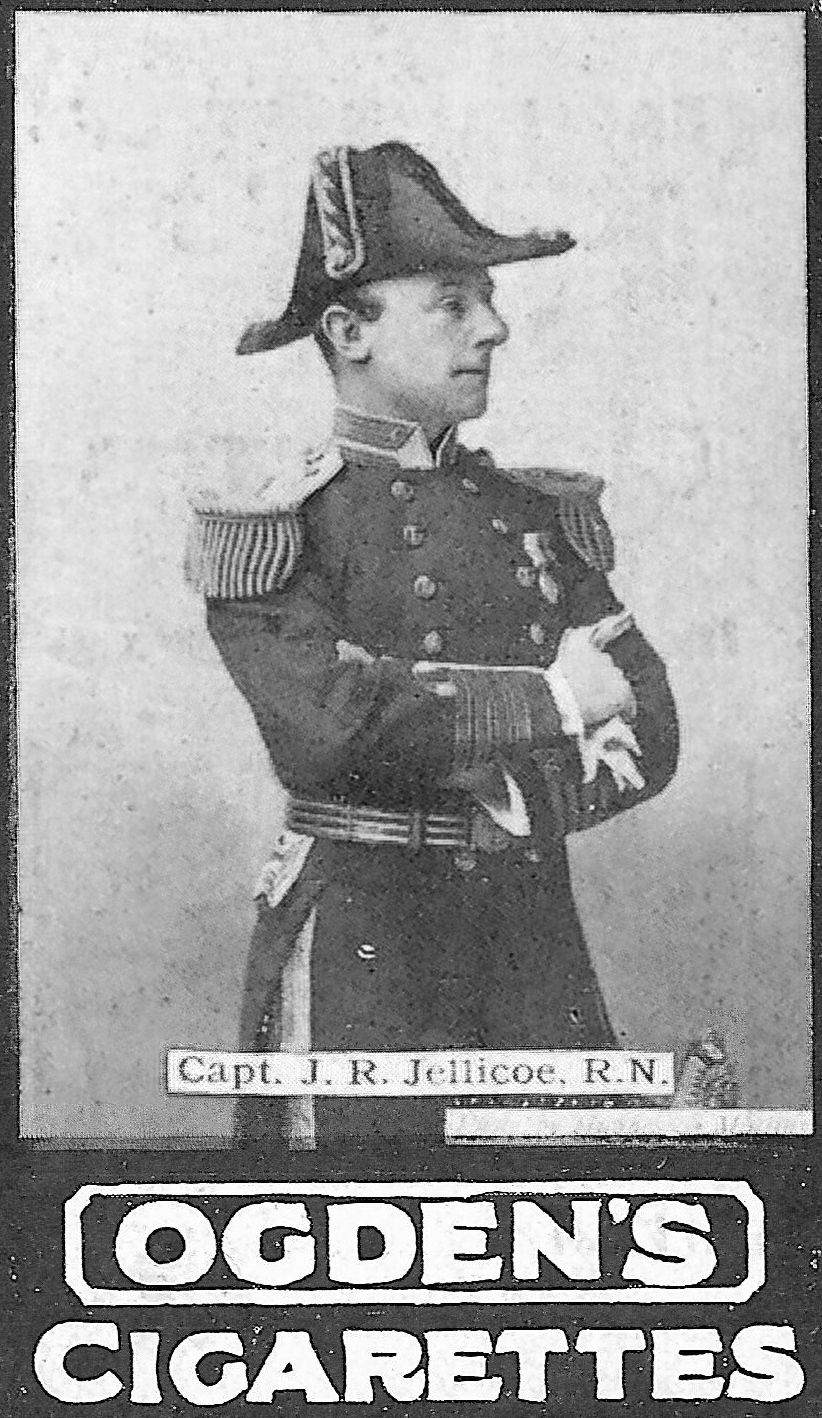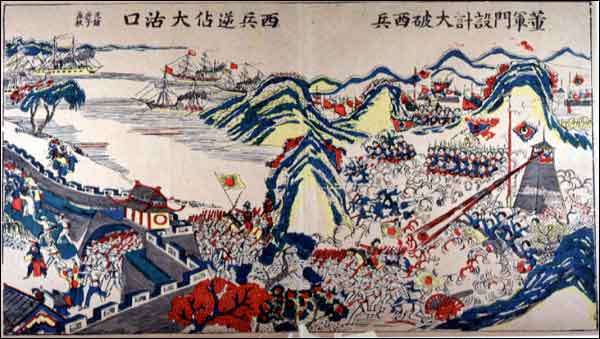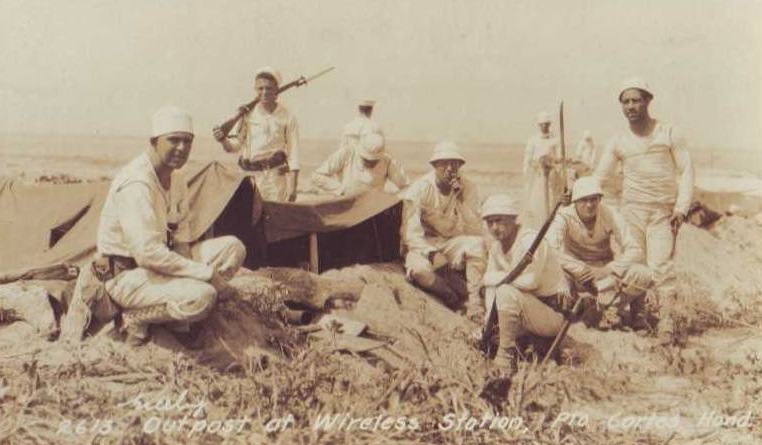|
HMS Centurion (1892)
HMS Centurion was the lead ship of her class of two pre-dreadnought battleships built for the Royal Navy in the 1890s. Intended for service abroad, they exchanged heavy armour and a powerful armament for high speed and long range to counter the foreign armoured cruisers then being built as commerce raiders and were rated as second-class battleships. Completed in 1894, ''Centurion'' was assigned to the China Station as its flagship. Together with her sister ship, , she supported Allied operations during the Boxer Rebellion of 1899–1901 and contributed landing parties to participate in the Battles of the Taku Forts and of Tientsin. The ship returned home in 1901 to be rebuilt with a more powerful secondary armament. ''Centurion'' rejoined the China Station two years later and remained there until 1905 when she returned to Britain. Already made obsolete by the increasing speeds of the cruisers the ship was designed to defend against, she was placed in reserve until 1909 ... [...More Info...] [...Related Items...] OR: [Wikipedia] [Google] [Baidu] |
HM Dockyard, Portsmouth
His Majesty's Naval Base, Portsmouth (HMNB Portsmouth) is one of three operating bases in the United Kingdom for the Royal Navy (the others being HMNB Clyde and HMNB Devonport). Portsmouth Naval Base is part of the city of Portsmouth; it is located on the eastern shore of Portsmouth Harbour, north of the Solent and the Isle of Wight. Until the early 1970s, it was officially known as Portsmouth Royal Dockyard (or HM Dockyard, Portsmouth); thereafter the term 'Naval Base' gained currency, acknowledging a greater focus on personnel and support elements alongside the traditional emphasis on building, repairing and maintaining ships. In 1984 Portsmouth's Royal Dockyard function was downgraded and it was formally renamed the 'Fleet Maintenance and Repair Organisation' (FMRO). The FMRO was privatized in 1998, and for a time (from 2002 to 2014), shipbuilding, in the form of block construction, returned. Around 2000, the designation HMS ''Nelson'' (which until then had been specific to ... [...More Info...] [...Related Items...] OR: [Wikipedia] [Google] [Baidu] |
Lead Ship
The lead ship, name ship, or class leader is the first of a series or class of ships all constructed according to the same general design. The term is applicable to naval ships and large civilian vessels. Large ships are very complex and may take as many as five to ten years to build. Improvements based on experience with building and operating the lead ship are likely to be incorporated into the design or construction of later ships in the class, so it is rare to have vessels that are identical. The second and later ships are often started before the first one is completed, launched and tested. Nevertheless, building copies is still more efficient and cost-effective than building prototypes, and the lead ship will usually be followed by copies with some improvements rather than radically different versions. The improvements will sometimes be retrofitted to the lead ship. Occasionally, the lead ship will be launched and commissioned for shakedown testing before following ship ... [...More Info...] [...Related Items...] OR: [Wikipedia] [Google] [Baidu] |
Reserve Fleet
A reserve fleet is a collection of naval vessels of all types that are fully equipped for service but are not currently needed; they are partially or fully decommissioned. A reserve fleet is informally said to be "in mothballs" or "mothballed"; an equivalent expression in unofficial modern US naval usage is "ghost fleet". In earlier times, especially in British usage, the ships were said to be "laid up in ordinary". Overview Such ships are held in reserve against a time when it may be necessary to call them back into service. They are usually tied up in backwater areas near naval bases or shipyards in order to speed the reactivation process. They may be modified for storage during such a period, for instance by having rust-prone areas sealed off or wrapped in plastic or, in the case of sailing warships, the masts removed. While being held in the reserve fleet, ships typically have a minimal crew (known informally as a skeleton crew) to ensure that they stay in somewhat usable co ... [...More Info...] [...Related Items...] OR: [Wikipedia] [Google] [Baidu] |
Cruiser
A cruiser is a type of warship. Modern cruisers are generally the largest ships in a fleet after aircraft carriers and amphibious assault ships, and can usually perform several roles. The term "cruiser", which has been in use for several hundred years, has changed its meaning over time. During the Age of Sail, the term ''cruising'' referred to certain kinds of missions—independent scouting, commerce protection, or raiding—fulfilled by frigates or sloops-of-war, which functioned as the ''cruising warships'' of a fleet. In the middle of the 19th century, ''cruiser'' came to be a classification of the ships intended for cruising distant waters, for commerce raiding, and for scouting for the battle fleet. Cruisers came in a wide variety of sizes, from the medium-sized protected cruiser to large armored cruisers that were nearly as big (although not as powerful or as well-armored) as a pre-dreadnought battleship. With the advent of the dreadnought battleship before World W ... [...More Info...] [...Related Items...] OR: [Wikipedia] [Google] [Baidu] |
Battleship Secondary Armament
Secondary armament is a term used to refer to smaller, faster-firing weapons that were typically effective at a shorter range than the main (heavy) weapons on military systems, including battleship- and cruiser-type warships, tanks/armored personnel carriers, and rarely other systems. The nature, disposition, size and purpose of Naval secondary weapon systems changed dramatically as the threat changed from torpedo boats, to torpedo-carrying destroyers, to aircraft, to anti-ship missiles. Naval Pre-dreadnought era Pre-dreadnoughts, from the period 1890 to 1905, were typically fitted with 3 or 4 different calibres of weapon. The main guns were usually approximately 12-inch caliber, secondary weapons usually 6-inch but typically in the range 5-inch to 7.5-inch. Guns smaller than 4.7-inch are usually considered "tertiary". (Many pre-dreadnoughts also carried 9.2 to 10-inch "secondary" guns, but they are usually treated instead as a mixed-caliber main armament.) Secondary ... [...More Info...] [...Related Items...] OR: [Wikipedia] [Google] [Baidu] |
Battle Of Tientsin
The Battle of Tientsin, or the Relief of Tientsin, occurred on 13–14 July 1900, during the Boxer Rebellion in Northern China. A multinational military force, representing the Eight-Nation Alliance, rescued a besieged population of foreign nationals in the city of Tientsin (Pinyin: Tianjin) by defeating the Chinese Imperial army and Boxers. The capture of Tientsin gave the Eight-Nation Alliance a base to launch a rescue mission for the foreign nationals besieged in the Legation Quarter of Beijing and to capture Beijing in the Battle of Peking (1900). Background Tientsin, in 1900, consisted of two adjacent, but very different sub-divisions. To the northwest was the ancient high-walled Chinese city, on each side. To the southeast, one to two miles away (1.6 to 3.2 km), along the Hai River, was the treaty port and foreign settlements, a half-mile wide . About one million Chinese lived within the walled city or in satellite communities outside the wall. In the fo ... [...More Info...] [...Related Items...] OR: [Wikipedia] [Google] [Baidu] |
Battle Of Taku Forts (1900)
The Battle of the Taku or Dagu Forts was a short engagement during the Boxer Rebellion between the Chinese Qing dynasty military and forces belonging to Eight Nation Alliance in June 1900. European and Japanese naval forces captured the Taku forts after a brief but bloody battle with units of the Qing dynasty. Their loss prompted the Qing government to side with the Boxers while the Chinese army was ordered to resist all foreign military forces within Chinese territory. Allied powers remained in control of the forts until the end of the Boxer Rebellion in September 1901. Background In mid-June 1900, allied forces in northern China were vastly outnumbered. In Beijing there were 450 soldiers and marines from eight countries protecting the diplomatic legations. Somewhere between Tianjin and Beijing were the 2,000 men in the Seymour Expedition attempting to get to Beijing to reinforce the legation guards. In Tianjin were 2,400 Allied soldiers, mostly Russians. All of these f ... [...More Info...] [...Related Items...] OR: [Wikipedia] [Google] [Baidu] |
Landing Party
A landing party is a portion of a ship's crew designated to go ashore from the ship and take ground, by force if necessary. In the landing party promulgated by the US Navy 1950 Landing Party Manual, the party was to be equipped with small arms – at least a rifle platoon for a destroyer; up to a rifle company plus machine gun platoon for a cruiser. Embarked Marines were to be used where possible. History Since the American Revolution larger U.S. Navy warships had a detachment of Marines. As the Marine detachments were small, it was sometimes necessary to supplement their numbers with armed sailors when making opposed landings. By the late 1800s, the Navy developed formal doctrines for the organization and use of landing parties. Prior to World War II, landing parties were used on at least 66 occasions during the 19th Century and 136 times in the Caribbean and Central America from 1900 to 1930. Two of the larger events were a naval landing party were used were the Second Batt ... [...More Info...] [...Related Items...] OR: [Wikipedia] [Google] [Baidu] |
Boxer Rebellion
The Boxer Rebellion, also known as the Boxer Uprising, the Boxer Insurrection, or the Yihetuan Movement, was an anti-foreign, anti-colonial, and anti-Christian uprising in China between 1899 and 1901, towards the end of the Qing dynasty, by the Society of Righteous and Harmonious Fists (), known as the "Boxers" in English because many of its members had practised Chinese martial arts, which at the time were referred to as "Chinese boxing". After the Sino-Japanese War of 1895, villagers in North China feared the expansion of foreign spheres of influence and resented the extension of privileges to Christian missionaries, who used them to shield their followers. In 1898 Northern China experienced several natural disasters, including the Yellow River flooding and droughts, which Boxers blamed on foreign and Christian influence. Beginning in 1899, Boxers spread violence across Shandong and the North China Plain, destroying foreign property such as railroads and attacking or ... [...More Info...] [...Related Items...] OR: [Wikipedia] [Google] [Baidu] |
Sister Ship
A sister ship is a ship of the same class or of virtually identical design to another ship. Such vessels share a nearly identical hull and superstructure layout, similar size, and roughly comparable features and equipment. They often share a common naming theme, either being named after the same type of thing or person (places, constellations, heads of state) or with some kind of alliteration. Typically the ship class is named for the first ship of that class. Often, sisters become more differentiated during their service as their equipment (in the case of naval vessels, their armament) are separately altered. For instance, the U.S. warships , , , and are all sister ships, each being an . Perhaps the most famous sister ships were the White Star Line's s, consisting of , and . As with some other liners, the sisters worked as running mates. Other sister ships include the Royal Caribbean International's and . ''Half-sister'' refers to a ship of the same class but with some s ... [...More Info...] [...Related Items...] OR: [Wikipedia] [Google] [Baidu] |
Flagship
A flagship is a vessel used by the commanding officer of a group of naval ships, characteristically a flag officer entitled by custom to fly a distinguishing flag. Used more loosely, it is the lead ship in a fleet of vessels, typically the first, largest, fastest, most heavily armed, or best known. Over the years, the term "flagship" has become a metaphor used in industries such as broadcasting, automobiles, education, technology, airlines, and retail to refer to their highest profile or most expensive products and locations. Naval use In common naval use, the term ''flagship'' is fundamentally a temporary designation; the flagship is wherever the admiral's flag is being flown. However, admirals have always needed additional facilities, including a meeting room large enough to hold all the captains of the fleet and a place for the admiral's staff to make plans and draw up orders. Historically, only larger ships could accommodate such requirements. The term was also used by ... [...More Info...] [...Related Items...] OR: [Wikipedia] [Google] [Baidu] |
China Station
The Commander-in-Chief, China was the admiral in command of what was usually known as the China Station, at once both a British Royal Navy naval formation and its admiral in command. It was created in 1865 and deactivated in 1941. From 1831 to 1865, the East Indies Station and the China Station were a single command known as the East Indies and China Station. The China Station, established in 1865, had as its area of responsibility the coasts of China and its navigable rivers, the western part of the Pacific Ocean, and the waters around the Dutch East Indies. The navy often co-operated with British commercial interests in this area. The formation had bases at Singapore (Singapore Naval Base), HMS ''Tamar'' (1865–1941 and 1945–1997) in Hong Kong and Wei Hai (at Liugong Island) (1898–1940). The China Station complement usually consisted of several older light cruisers and destroyers, and the Chinese rivers were patrolled by a flotilla of suitable, shallow-draught gunboats, ... [...More Info...] [...Related Items...] OR: [Wikipedia] [Google] [Baidu] |


_underway_c1947.jpg)

.jpg)





